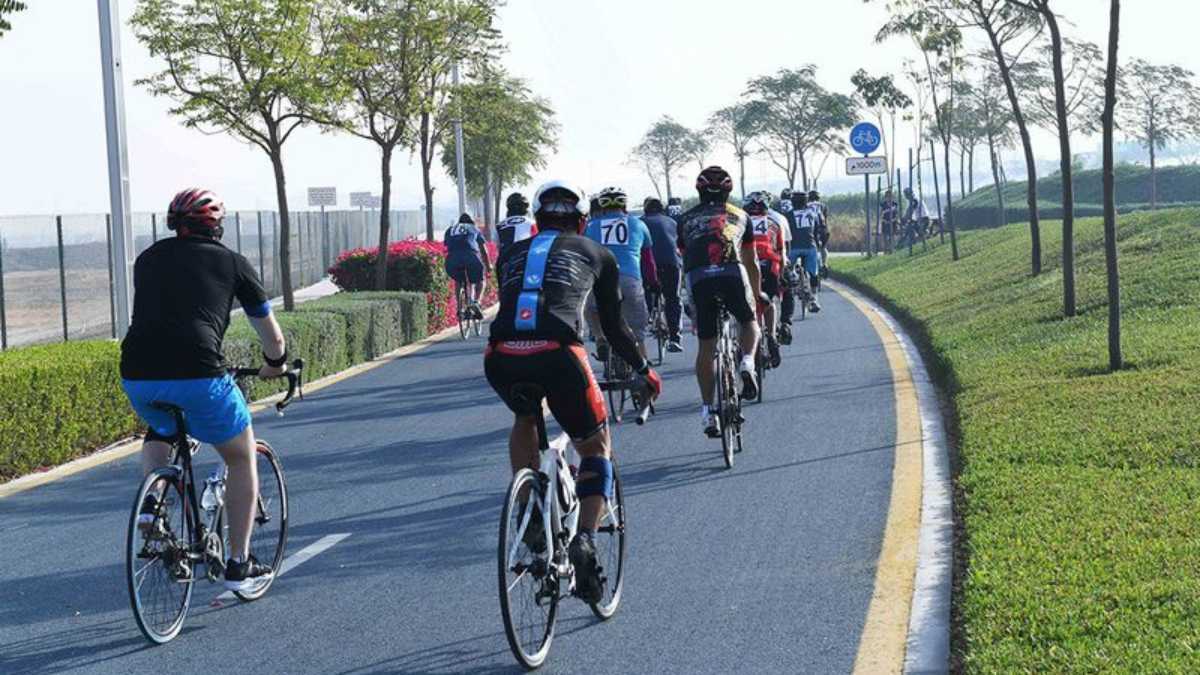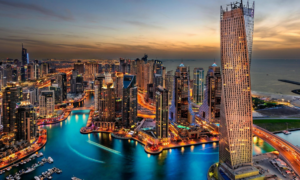Dubai, known for its luxurious lifestyle and cutting-edge infrastructure, is rapidly becoming a haven for cycling enthusiasts. The Dubai Roads and Transport Authority (RTA) recently made a groundbreaking announcement that 90% of the construction of cycling tracks at Al Khawaneej and Mushrif is now complete. In this comprehensive article, we will explore the exciting developments in Dubai’s cycling landscape, how the RTA is spearheading this transformation, and what it means for residents and visitors alike.
Dubai’s Cycling Revolution
Dubai’s vision for a bicycle-friendly city is not just a dream; it’s a reality in the making. With the guidance of Sheikh Hamdan bin Mohammed bin Rashid Al Maktoum, Crown Prince of Dubai, Chairman of the Executive Council, the RTA has undertaken a bold initiative to make Dubai a global benchmark for cycling infrastructure. This ambitious project aligns perfectly with Dubai Urban Plan 2040, aiming to elevate the city’s living standards.
The Road to Transformation
The RTA’s commitment to this project reflects its dedication to improving the lives of Dubai’s residents and tourists. By constructing cycling tracks at Al Khawaneej and Mushrif, the RTA is creating a network that enhances connectivity between residential areas and key attractions in the city. Let’s take a closer look at the specifics of these new tracks.
Al Khawaneej Cycling Track
The first cycling track spans 7 kilometers and stretches from the Quranic Garden on Sheikh Zayed bin Hamdan Al Nahyan Street up to the intersection with Al Khawaneej Street. To ensure the safety and convenience of cyclists, a combined pedestrian and cycling bridge on Al Khawaneej Street has been constructed, seamlessly connecting to the existing cycling track in Al Khawaneej.
Mushrif Cycling Lane
The second cycling lane, also covering 7 kilometers, begins at Mushrif Park near the Crocodile Park. It extends to the intersection with Sheikh Zayed bin Hamdan Al Nahyan Street and then heads North, intersecting with Al Khawaneej Street. Similar to the Al Khawaneej track, a pedestrian and cycling bridge on Sheikh Zayed bin Hamdan Al Nahyan Street links this lane to the cycling track in Al Khawaneej. Together, these new lanes, combined with the existing ones, create a cycling network spanning approximately 39 kilometers in Al Khawaneej and Mushrif.

Dubai’s Expanding Cycling Network
The cycling track project at Al Khawaneej and Mushrif is just one piece of a larger puzzle. The RTA’s master plan aims to develop cycling tracks that connect key districts of the city, fostering a seamless cycling experience. By 2026, the total length of cycling tracks in Dubai is set to increase from 544 kilometers to a whopping 819 kilometers. This expansion will link coastal areas such as Jumeirah, Al Sufouh, and the Marina to external road tracks at Al Qudra, Seih Al Salam, and Nad Al Sheba, passing through Al Barsha, Dubai Hills, and Nad Al Sheba.
Pedaling Safely
Safety is a paramount concern for both cyclists and pedestrians. To ensure a secure environment, RTA has implemented speed limits on cycling tracks. For tracks dedicated to amateurs and those shared with vehicles, the speed limit is set at 30 km/h. Within urban areas, dedicated or shared tracks with pedestrians have a speed limit of 20 km/h. However, no specific speed limits are imposed on cycling training tracks, providing enthusiasts with flexibility.
Conclusion
Dubai’s journey to becoming a bicycle-friendly city is gaining momentum, and the completion of cycling tracks at Al Khawaneej and Mushrif is a significant milestone. As the city continues to expand its cycling network, residents and tourists can look forward to a healthier, more sustainable, and enjoyable way to explore the vibrant streets of Dubai. Whether you’re a seasoned cyclist or a beginner, Dubai’s cycling revolution has something for everyone, making it one of the most exciting developments in the city’s modern history. Get ready to pedal your way through this urban paradise!



























